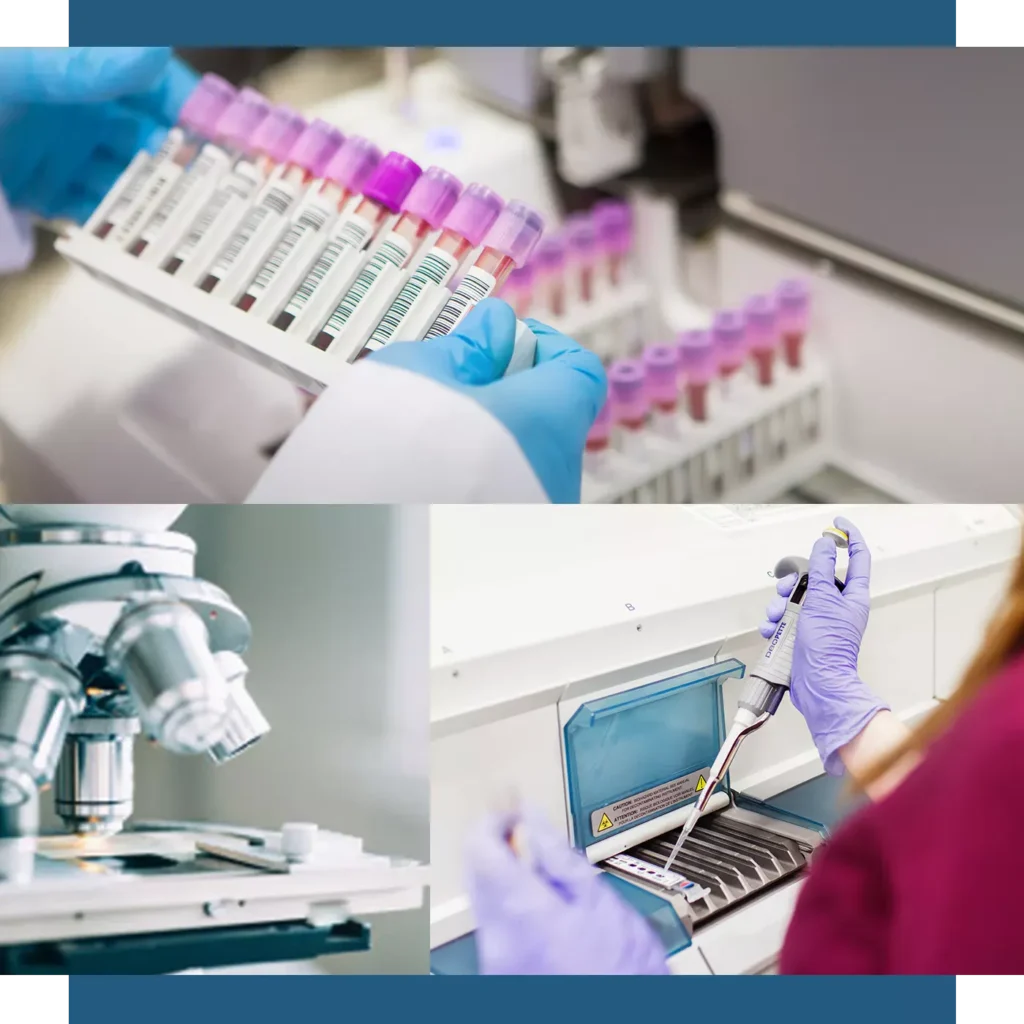In Vitro Fertilization (IVF)

IVF (in vitro fertilization) is a method of assisted fertilization. With this method, the egg is not fertilized with the sperm in the woman’s body, but rather in the laboratory. To each egg, add approx. 100,000 sperm cells in a small bowl. Fertilization then takes place “naturally” in that only a single sperm cell is released into the egg. The method is called “in-vitro”, which literally means “in glass”.

When is in-vitro fertilization appropriate?
IVF is e.g. an option
- In case of blocked or missing fallopian tubes in the woman (tubal sterility).
- When the man’s sperm quality is reduced.
- In endometriosis,
- Unexplained infertility.
- After a number of inseminations without pregnancy.

What happens in in vitro fertilization?
1. The woman receives hormone treatment
The chance of a successful result with IVF treatment increases significantly if several eggs succeed in maturing at the same time (usually with the help of hormone treatment). If this is no longer possible or not desired (older age, limited egg reserve, hypersensitivity to hormones) IVF cycles can also be carried out with one or a few eggs (‘mild stimulation IVF’).
2. The woman comes for egg retrieval
When the eggs are ripe, the doctor removes them guided by ultrasound through a fine needle that is inserted into the ovary. During this egg retrieval, the fluid is sucked out of the follicles. The procedure usually takes 15-20 minutes. The woman can receive painkillers and a mild sedative before the procedure. The retrieved eggs are then prepared for fertilization in the laboratory.
3. The man submits a sperm sample
The sperm cells from the semen sample are purified in the laboratory. In this treatment, the motile sperm cells are separated from the non-motile cells. If no sperm are found in the man’s ejaculate, material from a testicular biopsy (TESA) can be used. If the partner does not have sperm that can fertilize, donor sperm from a sperm bank is used.
4. After egg retrieval and sperm sample
The day after egg retrieval, it is checked whether the eggs are fertilized. The fertilized eggs develop into embryos, which are stored in an incubator (warming cupboard) for up to five days. After five days, the fertilized egg consists of 100-150 cells and is called a blastocyst.
5. Laying down of the fertilized egg
When the blastocysts are ready, the doctor places the embryo in the uterus.
The blastocyst application is painless and only takes a few minutes. The blastocyst can now attach itself to the uterine lining and develop further.
With the help of a pregnancy test two weeks after the placement, it is checked whether the woman has become pregnant.
If the fertilized eggs cannot be laid, they can be frozen for use at a later time. This means that the woman avoids hormone treatment and egg retrieval at the next attempt.
Are there risks and side effects with in-vitro fertilization?
As with any other medical intervention, there are also certain risks associated with IVF. All complications are rare – but can be very serious in individual cases.
The most common side effects are bleeding and infection. The risk is small – only approx. 1 in 400. Another risk is that you can hit the other organs with the egg retrieval needle – this is rare. Overstimulation occurs in just under 2%. Overstimulation is due to a strong reaction to the hormone treatment and can result in abdominal pain, nausea and shortness of breath. Most often, the symptoms disappear within 1-2 weeks, but in severe cases, hospitalization and blood-thinning treatment may be required.
The biggest risk with IVF treatment is multiple births.
Being pregnant with more than one fetus can increase the risk of:
Premature birth, preeclampsia, fetal death, diabetes during pregnancy etc.
Therefore, as a rule, we only lay one egg at a time to take care of you and your child.
Your contact doctor explains in detail the chances and risks of the treatment as well as the course of treatment at the initial interview.
